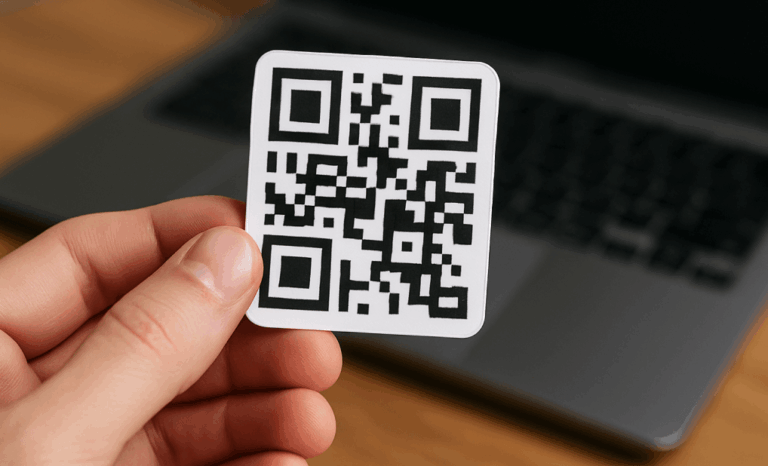When you think about a simple yet powerful way to connect your business with customers, the QR code sticker might not be the first thing that comes to mind. But these small pieces of adhesive material are transforming how companies share information, boost engagement, and strengthen their brand identity. From promotional offers on water bottles to product details on packaging, custom QR code stickers are one of the most versatile tools in modern marketing.
Why QR code stickers matter today
A dynamic QR code is essentially a bridge between the physical and digital world. By applying a code sticker to an object, you’re giving people direct access to information, websites, or services with a quick scan. Unlike traditional printed materials, a QR sticker can be linked to dynamic content that you can edit or update anytime using a QR code generator. That means the same sticker can lead to a new QR code destination tomorrow without reprinting.
Businesses across industries are adopting custom QR code stickers because they are inexpensive, durable, and adaptable. Whether it’s adding a scannable label to your product, a decal on your shop window, or a vinyl sticker on outdoor signage, the flexibility is enormous.
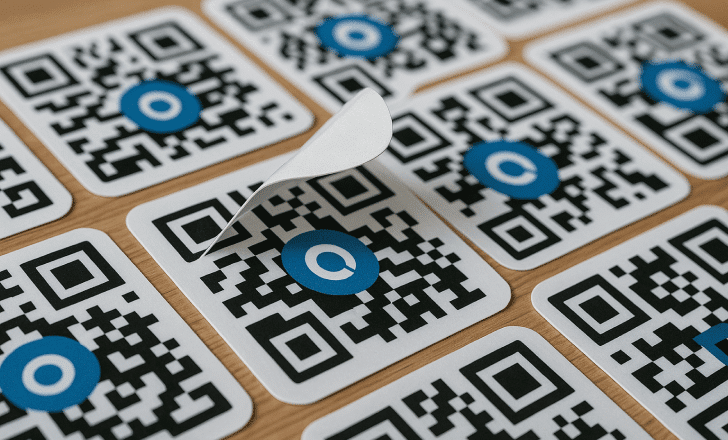
From design to finished product
Creating a custom QR code for stickers starts with choosing the right platform. With QRCodeKIT, you can upload your logo, customize colors, and generate a new QR code that aligns with your brand identity. Once the digital design is ready, it’s applied to materials like die cut stickers, waterproof vinyl, or other types of labels. The result is a finished product that looks professional and can be scanned easily with smartphones.
Quality matters. A vinyl layer provides outdoor durability, ensuring that stickers remain intact even when exposed to scratches, sunlight, or moisture. That’s why many companies opt for great quality materials designed specifically for outdoor use. The adhesive backing makes it easy to apply on surfaces such as bottles, packaging, laptops, or shop windows.
Business benefits of QR stickers
For a business, using QR stickers can mean instant interaction with customers. Imagine a water bottle with a QR code sticker that leads to a website offering a discount. Or a coffee cup with a scannable code linking to a customer feedback form. These small labels act as digital gateways, enriching traditional marketing materials with interactive experiences.
Some of the main benefits include:
- Customer engagement: connect directly to landing pages, apps, or social media pages.
- Flexibility: a dynamic QR code lets you change the destination link without reprinting.
- Cost-effectiveness: stickers are cheap to print and easy to distribute in bulk quantities.
This combination of affordability and adaptability makes them an ideal tool for marketing campaigns and daily business operations alike.
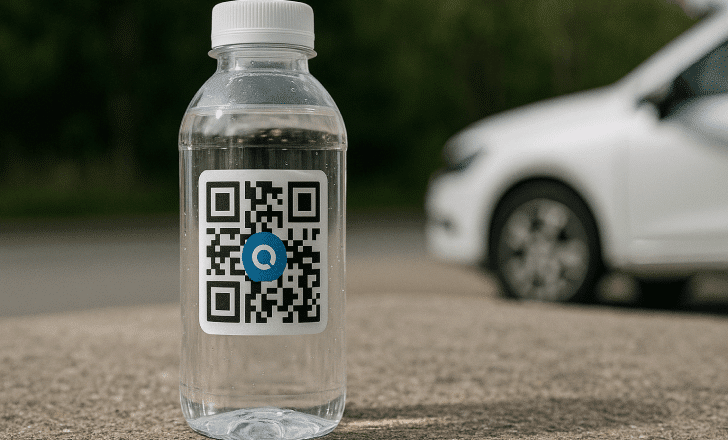
Customization: More than just a code
A plain black-and-white QR code works, but it doesn’t always stand out. With QRCodeKIT, you can create custom QR code stickers that reflect your brand personality. Upload your logo, choose shapes, and adjust colors to match your marketing identity. These amazing designs not only look better but also improve scan rates because they draw attention.
Another creative approach is using die cut stickers shaped around the code or adding a vinyl layer for extra resilience. This way, your QR labels don’t just work as functional tools but also as visually appealing artwork.
Everyday applications for QR code labels
QR stickers are not limited to product packaging. They can be applied in countless scenarios:
- Water bottles at sports events that link to sponsorship pages or promotional offers.
- Stores adding stickers to their windows to display opening hours, discounts, or contact info.
- Shipping labels that allow customers to track their order status instantly.
- Event tickets enhanced with QR stickers to simplify entry and reduce paper waste.
Each application demonstrates how a simple sticker can become a powerful communication tool.
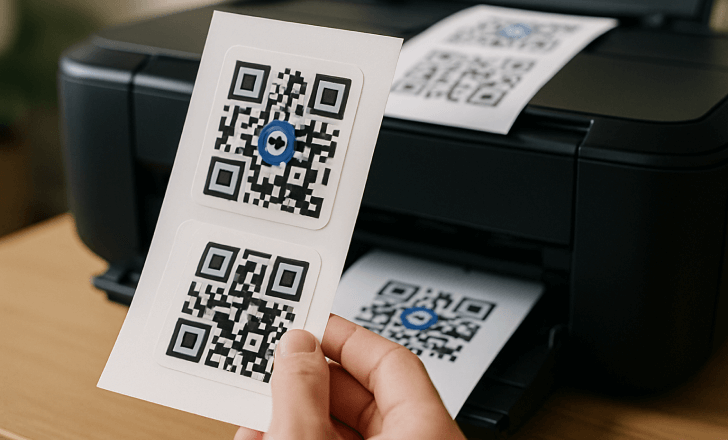
Outdoor use and durability
One of the concerns businesses have is whether QR code stickers hold up in challenging environments. Thanks to materials like vinyl and protective coatings, these stickers are resistant to water, scratches, and sunlight. A properly printed QR code sticker maintains clarity and can be scanned easily even after months of exposure. This makes them reliable for outdoor use, on vehicles, shop windows, or promotional billboards.
The key to great quality lies in choosing the right material, from waterproof decals to scratch-resistant finishes. That way, the code remains sharp, the artwork intact, and the message always accessible.
How to generate your own QR stickers
With QRCodeKIT, creating QR code labels is straightforward. You start by choosing the type of code you need—be it for a website, file download, social media page, or contact info. Once you generate the code, you can download it in high resolution, customize the design, and prepare it for print. From there, your company can order stickers in the desired quantity, ensuring consistency across all marketing channels.
This process ensures every user ends up with a finished product that’s both professional and functional. And because you can update the linked content at any time, your stickers remain relevant long after printing.
QR code stickers for marketing campaigns
A QR code sticker can supercharge marketing efforts by embedding interactivity directly into the physical world. Imagine distributing flyers or promotional offers that include a QR sticker leading to a video or limited-time discount. Or sending out free samples with labels that invite people to visit a website and claim exclusive deals.
By integrating QR stickers into marketing materials, businesses can measure engagement through scan analytics, track campaign performance, and refine strategies in real time. Unlike static print ads, QR stickers turn passive impressions into active interactions.
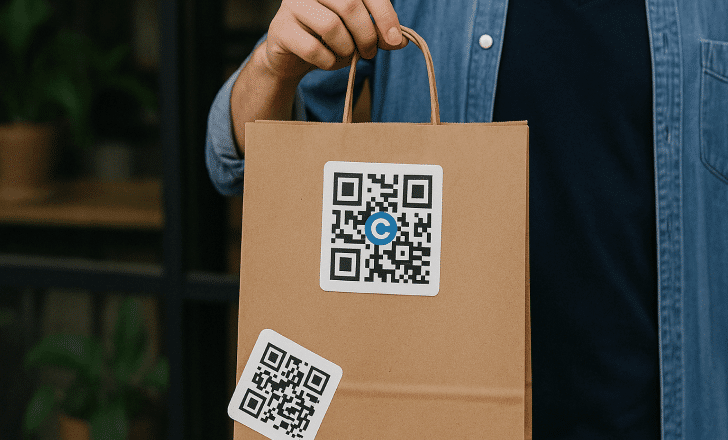
Printing and design considerations
When moving from design to print, there are a few factors to keep in mind:
- Size: codes should be large enough to be scanned easily by smartphones.
- Material: waterproof vinyl and protective laminates improve outdoor durability.
- Colors: contrast is crucial. A QR code with inverted colors or low contrast may not scan well.
- Placement: choose surfaces where the sticker remains flat and visible.
By paying attention to these details, you ensure that the final printed sticker looks professional and performs reliably.
Beyond marketing: Practical uses of QR stickers
While marketing is the most common use, QR stickers serve practical purposes too. Companies use them to label files, track inventory, and even log maintenance records for equipment. A code sticker can serve as a digital ID for products, linking to manuals, warranty details, or customer service contacts. In healthcare, QR labels on medication packaging provide patients with dosage information and safety notes.
This versatility shows that QR stickers aren’t just promotional tools but also practical assets for operational efficiency.
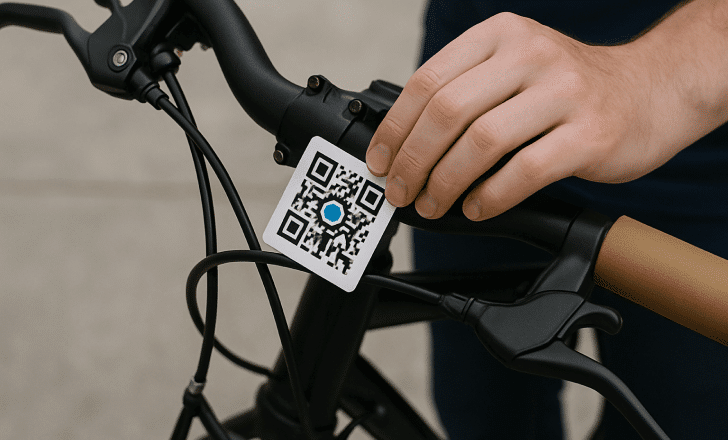
Why businesses trust custom QR code stickers
At the end of the day, businesses want solutions that are reliable, affordable, and adaptable. A custom QR code sticker checks all three boxes. With the ability to automatically generate new codes, design branded labels, and print durable stickers, companies can extend their reach without inflating budgets. Whether it’s art, branding, or functional service, the possibilities are endless.
What makes a QR code sticker successful?
A QR sticker is only as good as its scan experience. That means making sure the code leads to a relevant link, the landing page is mobile-friendly, and the content is engaging. Brands that treat QR stickers as part of a broader marketing strategy see the best results. It’s not just about placing a code on a phone case or water bottles—it’s about creating an experience that resonates with customers.
